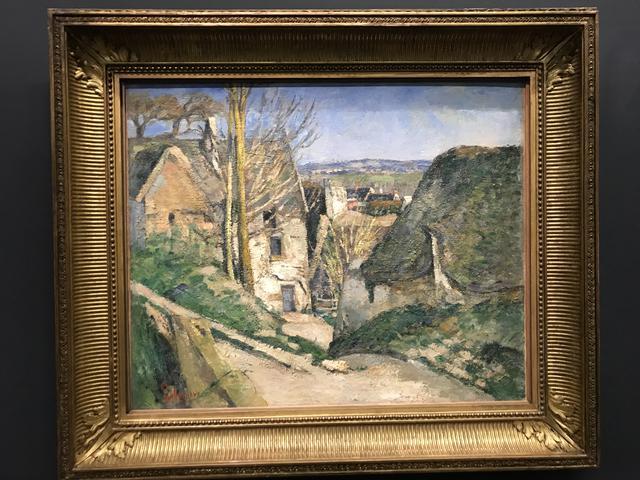The Hanged Man's House, Auvers-sur-Oise

"The Hanged Man's House, Auvers-sur-Oise" is a captivating masterpiece created by the renowned artist Paul Cézanne in 1873. This oil on canvas painting showcases the picturesque town of Auvers-sur-Oise in all its glory, capturing the essence of the Impressionist movement. At the young age of 33, Cézanne demonstrated his exceptional talent and artistic vision through this work, which has since been hailed as his first masterpiece. The painting made its debut at an Impressionist exhibition in 1874, where Cézanne also exhibited three other remarkable pieces. It is widely regarded as a pivotal moment in Cézanne's career, marking the beginning of his transition from Impressionism to Cubism.
In "The Hanged Man's House," Cézanne's artistic influences are evident, particularly that of his mentor Camille Pissarro. The painting reflects a departure from Cézanne's earlier style, characterized by light colors and fragmented brushstrokes, towards a more personal and introspective approach. The shift towards darker tones and more complex themes hints at Cézanne's evolving artistic sensibilities, setting the stage for his future explorations in Cubism. Through this work, Cézanne effectively bridges the gap between Impressionism and Cubism, showcasing his unique ability to blend different artistic movements seamlessly.
One of the most striking aspects of "The Hanged Man's House" is its impressionistic quality, with its naturalistic depiction of the town bathed in luminous light. The subtle presence of the sky in the background adds a touch of mystery to the scene, inviting viewers to contemplate the deeper meaning behind the painting. Cézanne's use of color in this work is particularly noteworthy, as he infuses each hue with a personal richness that is both captivating and thought-provoking. This attention to detail and nuance elevates the painting to a level of artistic excellence that is truly unparalleled.
Overall, "The Hanged Man's House, Auvers-sur-Oise" stands as a testament to Paul Cézanne's genius and artistic innovation. Through this masterpiece, Cézanne not only showcases his technical prowess but also reveals his profound understanding of the intersection between light, color, and form. As visitors gaze upon this iconic painting, they are transported to a world where beauty and emotion converge in perfect harmony, leaving a lasting impression that resonates long after they have left the gallery.
© ChatGPT 3.5
This painting was the first painting that Cézanne sold in his career and in fact it was also one of the few paintings that sold when it was exhibited. At the time the critics did not know what to think about the painting, but this did not matter to the fan who had the vision of seeing something different at the time and this led him to buy the painting, this fan was Count Armand Doria, one of the first collectors of Impressionist paintings and was later acquired by Victor Choquet, who sold it for 6,510 francs to the Count of Camondo, who then took it to the Louvre in 1908.
According to Lionello Venturi, no one was hanged in that house and the name that Cézanne gave it was just that, a name that in fact has nothing to do with the image represented other than that it is just that, a house. "no one was hanged in that house." Of course, this is quite irrelevant to the image in which there is no hint of anything sinister, just an aesthetic concern for shape and color.
The town on which this painting is based is the same town where Vincent Van Gogh lived, in fact Cézanne became friends with the renowned Dr. Gachet, who would not only be Van Gogh's model, but also tried to help him in the last stage of his life.